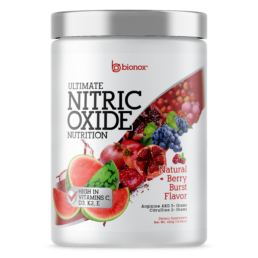Introduction
The horse chestnut, an important ingredient in many heart and circulation support formulas today. It is commonly used for promoting heart health. Its scientific name is Aesculus hippocastanum and is so much more than just the big tree you may have seen in a park. This article delves into the fascinating journey of the horse chestnut. We will be tracing its roots from historical significance to its role in today’s health practices. Our focus will be particularly in the realm of heart support.
The horse chestnut is known for its distinctive spiny fruits and brown seeds. They are often playfully referred to as “conkers”. The horse chestnut is significant in various cultures and traditional practices. Its story is rich with folklore, medicinal applications, and a longstanding presence in human history.
Ancient Remedies
We will explore how these historical uses have turned into modern medicinal applications. Also, we will be shedding light on this remarkable tree’s enduring relevance. Our aim will be helping you understand when and how to use it and explain its heart supporting role.
From ancient remedies and cures to current scientific research it has a long history of use. The horse chestnut’s journey is a testament to the interplay between nature and human health. This introduction sets the stage for a comprehensive exploration of the horse chestnut’s popular use. Its promising future in supporting heart health is also of interest.

Origins and Taxonomy
The horse chestnut, known scientifically as Aesculus hippocastanum, is a tree that has captivated attention both for its beauty and its medicinal properties. In this section, we delve into its scientific classification and origins. We will be tracing the journey of this remarkable tree from then old times to present. Horse Chestnut has widespread distribution across various landscapes worldwide. Here is a little more about it:
Scientific Classification
- Kingdom: Plantae – Denoting its status as a plant.
- Clade: Angiosperms and Eudicots – Indicating it’s a flowering plant with a specific seed structure.
- Order: Sapindales – A group known for species like maples and lychee.
- Family: Sapindaceae – A family that includes a variety of flowering plants.
- Genus: Aesculus – This genus comprises all horse chestnut species.
- Species: A. hippocastanum – The specific scientific name for the horse chestnut.
Origins
The horse chestnut likely originated from the Balkan Peninsula in Southeast Europe. It was not native to the British Isles but arrived there in the late 16th century. After its introduction, it quickly gained popularity worldwide for its ornamental value and natural beauty.
Geographic Distribution and Natural Habitat
The horse chestnut first appeared in the mountainous regions of Greece and Albania. It has since been widely cultivated across Europe and other parts of the world. Its ability to adapt to different soil types and climates has led to its widespread cultivation and use. Today, you can find it in temperate regions of Europe, North America, and parts of Asia.
In its natural habitat, the horse chestnut prefers moist, fertile soils. It commonly populates parklands and large gardens. It thrives in full sun but also tolerates semi-shaded areas. This makes it a highly adaptable species for various landscapes and locations.
This tree’s journey from the mountainous regions of the Balkans to its present-day global presence is a story of botanical migration. It is also one of human appreciation for its aesthetic and practical value. The horse chestnut’s adaptability not only to different terrains but also to cultural uses is significance. It underscores its role as a botanical traveler and a cherished component of the natural world.
Historical Uses and Cultural Significance
The horse chestnut tree has a rich tapestry of uses and significance woven through its rich history. This section explores its traditional roles in folk medicine, its cultural impact across different regions, and how its usage has evolved over time.
Traditional Uses in Folk Medicine and Early Medicine
Early Medicinal Applications
People traditionally used various parts of the horse chestnut tree, especially the seeds, leaves, and bark, in folk remedies across different regions. Practitioners highly valued the seeds for their effectiveness in treating varicose veins and hemorrhoids. Folk practitioners also turned to horse chestnut for its anti-inflammatory properties to reduce pain and swelling. This makes it a popular ingredient in many excellent nitric oxide products, as inflammation in the arteries can harm your heart. In some cultures, people used the tree’s components to address respiratory issues and fever. This is important since pulmonary and heart health are closely linked.
Cultural Significance in Different Regions
Europe: In its native Balkans and across Europe, the horse chestnut symbolizes strength and endurance. Its blossoming signaled the arrival of spring and featured prominently in local folklore.
British Isles: After its introduction, it became a staple in British gardens and parks, with ‘conkers’ becoming a cultural staple among children.
North America: Introduced later in North America, the tree is appreciated for its ornamental value, adding aesthetic beauty to parks and streets, just as in Europe.
Evolution in Usage Over Time
- From Folk Remedy to Scientific Study: The transition of horse chestnut from a folk remedy to a subject of scientific research marks a significant evolution. Modern medicine has taken interest in its active compound, aescin, for its potential therapeutic benefits.
- Contemporary Herbal Medicine: Today, horse chestnut extracts are widely used in herbal medicine, especially in Europe, for treating circulatory problems. They are increasing in use in the US as well, and form an important part of many heart health products.
- Changing Perceptions: The perception of the horse chestnut has shifted from a common tree to a valuable medicinal resource, with ongoing research exploring new therapeutic applications and tons of products, including its use today.
This historical journey of the horse chestnut, from traditional folk medicine to contemporary medicinal applications for blood pressure and heart support, highlights its therapeutic potential and cultural resonance across different European societies. China on the other hand merrits its own section and we will discuss that below.

The Use of Horse Chestnut in Traditional Chinese Medicine
The use of horse chestnut in Traditional Chinese Medicine (TCM) involves several species related to the European horse chestnut (Aesculus hippocastanum), most notably Aesculus chinensis and Aesculus wilsonii.
These species have been used in TCM for various health concerns, particularly their properties in improving circulation and reducing inflammation, which are vital components of heart health. Here’s a detailed overview of their use in TCM:
When and How It Started:
- Historical Roots: The exact origins of using horse chestnut in TCM are not well-documented, but it likely dates back centuries, as TCM has a long history of using a wide array of plant-based remedies.
- Integration into TCM: These species were integrated into the extensive list of herbal cures of Chinese Medicine, noted for their unique properties aligning with TCM’s natural approach to health.
Who Used It:
- TCM Practitioners: Chinese doctors and herbalists have used parts of the horse chestnut tree, including seeds, leaves, and bark, for various treatments.
- Common Usage: It was used by individuals seeking traditional remedies for ailments related to circulation, inflammation, and other related health issues.
Medicinal Uses and Why:
Circulatory Health:
Blood Movement and Stasis: Horse chestnut species in TCM are known for their ability to move and tonify blood, and remove stasis. This makes them useful for conditions like thrombosis and hemorrhoids.
Treating Venous Disorders: They are particularly effective in treating conditions related to venous insufficiency, such as varicose veins and leg cramps.
Other Health Benefits:
Anti-inflammatory: Used to reduce edema and bloating and to treat conditions like rheumatism and neuralgia.
Respiratory and Digestive Health: People use them as an expectorant for respiratory problems and to alleviate abdominal pain.
Women’s Health: People use the seeds and other parts to moderate menses, stop excessive uterine bleeding, and alleviate premenstrual symptoms.
How It’s Used:
Various Forms: Horse chestnut in TCM is being used in different forms, including extracts, oils, and as part of herbal mixtures.
External and Internal Applications: Applying it externally is also possible (like oils for rheumatism) or taken internally for systemic health issues.
Cultural Context:
Holistic Approach: In TCM, the use of horse chestnut is not just about treating specific ailments but is integrated into a natural approach to health, balancing the body’s Qi, and aligning with the principles of Yin and Yang.
This overview shows how horse chestnut species have been adopted and utilized in TCM, reflecting the system’s rich tradition of herbal medicine and its more basic approach to health and wellness.
Cardiovascular Support and Medical Research Today
Therapeutic Properties
Mechanisms of Action in Heart Health: How it works!
Venotonic Effect: Horse chestnut strengthens veins, increasing their elasticity and tone. This is crucial for health of the heart. Improved vein elasticity positively impacts blood pressure and heart health. It does so by improving blood flow to the heart. The helps by reducing the risk of conditions like venous insufficiency and varicose veins and so much more.
This efficiency in the venous system reduces the workload on the heart and can help maintain healthier blood pressure levels. Additionally, more elastic veins are less prone to blood clot formation. This is crucial for stopping some serious health issues. Among the most common is deep vein thrombosis. Overall, the health of veins is a key component in the broader picture of cardiovascular wellness.
Reducing Venous Return: It helps reduce the return of blood from veins in the legs to the heart, thereby decreasing venous pressure and swelling.
Anti-inflammatory Properties: It reduces inflammation in the veins, a key factor in many diseases.
Anti-inflammatory and Venotonic Effects:
Reduction of Edema: The anti-inflammatory properties help reduce swelling and edema, often associated with poor circulatory health.
Improving Blood Flow: By toning veins, horse chestnut improves overall blood flow, a vital aspect of heart wellness.
Clinical Studies and Research
Summary of Significant Studies:
Studies have shown that horse chestnut extract effectively reduces symptoms of chronic venous insufficiency. These include swelling, pain, and fatigue in the legs.
Research indicates its effectiveness in treating varicose veins, similar to compression stockings.
Comparative Analysis with Conventional Treatments:
Horse chestnut extract is similar to other treatments like compression therapy. In tests, giving favorable results in terms of efficacy and patient compliance.
Other Medicinal Uses
Broader Medicinal Applications
Use in Treating Venous Insufficiency and Varicose Veins:
Beyond cardio support, people today are using it for the treatment of venous insufficiency and varicose veins.
Potential Benefits for Other Health Conditions:
It may also be beneficial for hemorrhoids, post surgery edema, and as a potential anti-inflammatory agent for joint pain.
Safety and Side Effects
Potential Side Effects and Contraindications:
Common side effects are dizziness, headache, and gastrointestinal upset.
Individuals with liver or kidney disease, or pregnant or breastfeeding women, should not use it without medical advice.
Guidelines for Safe Usage:
Users should adhere to the recommended dosage and use it long-term only under a doctors guidance.
As with any supplement, individuals should use it as part of an overall health plan, not as the sole treatment for serious conditions.
In summary, both historical use and modern clinical studies support the applications of horse chestnut in heart health and beyond.
Its efficacy, particularly in venous conditions, is a valuable addition to herbal medicine. However, like any therapeutic agent, understanding its safety profile and potential interactions is crucial for its responsible use.
Ultimate Nitric Oxide Nutrition With Horse Chestnut

